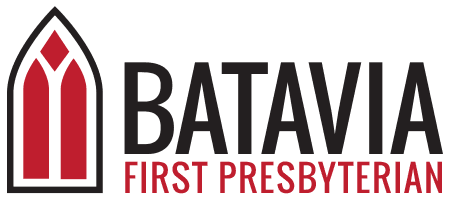Weekly Bible Devotional
“Draw Near to Truth”
December 6, 2020
Scripture for Sunday: Luke 3:1-6
In the fifteenth year of the reign of Emperor Tiberius, when Pontius Pilate was governor of Judea, and Herod was ruler of Galilee, and his brother Philip ruler of the region of Ituraea and Trachonitis, and Lysanias ruler of Abilene, 2 during the high priesthood of Annas and Caiaphas, the word of God came to John son of Zechariah in the wilderness. 3 He went into all the region around the Jordan, proclaiming a baptism of repentance for the forgiveness of sins, 4 as it is written in the book of the words of the prophet Isaiah,
“The voice of one crying out in the wilderness:
‘Prepare the way of the Lord,
make his paths straight.
5 Every valley shall be filled,
and every mountain and hill shall be made low,
and the crooked shall be made straight,
and the rough ways made smooth;
6 and all flesh shall see the salvation of God.’”
Notes on the Text:
As part of the journey of Advent, we visit this week the story of John the Baptist who called people repent and prepare the way for Jesus’ ministry. This was not just a personal call to change one’s ethical behavior. It was also a call for the people to stop participating in a system that promoted violence, oppression, and domination. That is why he baptized people in the wilderness away from the “appropriate” venues of the temple. That is why he used baptism as a symbol of cleansing of those ways of thinking and behaving. We imagine that John with this type of preaching would have repelled people from him, but the fact of the matter is that people flocked to him. They liked his message because he offered them a viable alternative in a time of great desperation and distress. The truth he was proclaiming rang true for them!
In preparing people for this ministry of his cousin, Jesus, John the Baptist offered them an alternative way to open their lives to God’s truth. John offered rituals, practices, and visions that helped lead people to know God’s truth in their hearts. The religious and political leaders of his day were corrupted by a vision of the world that put ego power at the center. They harmed their communities for the sake of wealth and power. But John came proclaiming an alternative vision. He helped his people draw near to truth by going out into the wilderness, getting baptized, relearning the poetic words of the prophets about justice, and practicing justice and compassion in their daily lives. He combined head and heart knowledge.
For Reflection:
As we prepare for the coming of Christ into our broken world in this season of Advent, we are invited to embrace the journey of teachers like John the Baptist. We cannot think our way into God’s expansive truth that is beyond any of our imaginings. We are instead invited to lean into the truth of God through practices of the heart that help us release the hold of our egos on our lives. We can do that through rituals, daily practices of justice, and the poetry of our faith.

Art Reflection by Lisle Gwynn Garrity:
While the opening of this passage, saturated with rulers and regions that are foreign to us, may feel like detail overload to our ears, I like to imagine the writer is using a bit of comical irony. Luke catches us up on all the fancy rulers of the day, listing off their network of connections and territories. He paints a landscape of power and social control. Yet, despite all of these mighty rulers—those who were most equipped to dictate messages to the masses—the word of God came to John son of Zechariah in the wilderness. Who? Where? Of all the people God could’ve chosen as a vessel for God’s message, God chooses an offbeat, repentance preacher in the middle of nowhere. The irony surely was not lost on the early listeners of this story. But we know who John son of Zechariah is. We know he is a miracle child, born strong in spirit from a situation of barrenness. We know his story parallels that of Christ. We know that he foretells good news of a world where the crooked will be made straight and the hills made smooth. Perhaps this is where God’s truth emerges: from the mouths of those we least expect, from the so-called “powerless,” from those who lurk on the margins of society or power or the edges of our own lives. In this season of truth-seeking, where will you draw near? What voices will fill your ears? What voices will shape your consciousness, your choices, your perception of the world? In your own life, where is the voice of one crying out?
Draw Near to God in Prayer:
Breathe deeply as you gaze upon the image of John the Baptist. What story do you imagine for the figure? What deeper meaning comes into view? Get quiet and still, offering a silent or spoken prayer to God.
Draw Near to Truth by Sarah Are:
Truth is like sand—
Slipping through my fingers
every time I turn on the news.
So day after day, I gather the dust at my feet
and build sand castles of the world I want to see—
Sand castle cities with fair housing, no walls,
families united and a name like Love.
And when the waves threaten to tear them down,
I will rebuild.
For the truest thing I know is that
God is love,
and love is stronger than fear.
So at the end of the day, if you need me,
I’ll be taking sand-soaked alternative truths
and turning them into sand castles of a better world—
A world rooted in love,
which I will keep building
until “love,” and “truth” and “God” all sound like synonyms.


